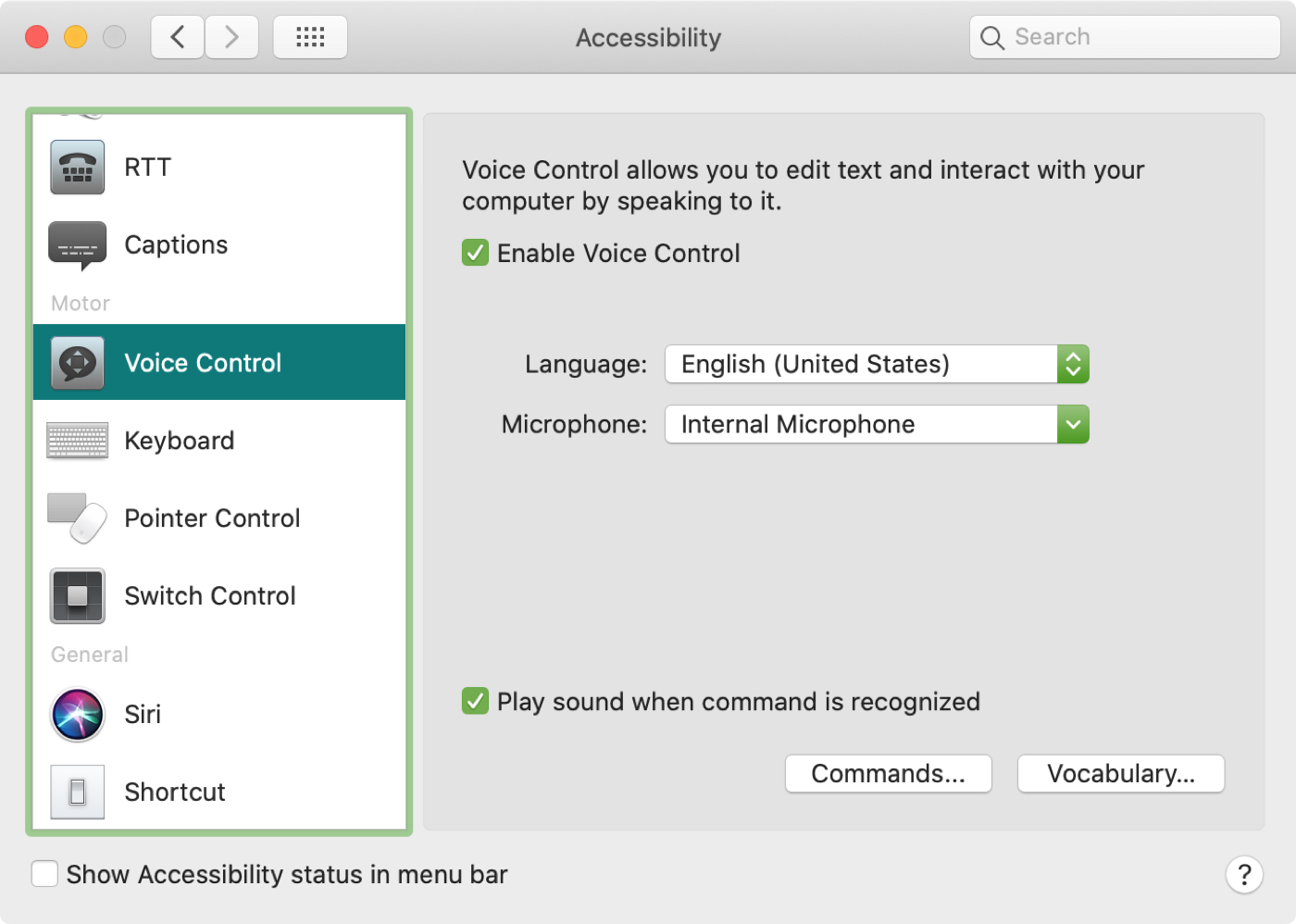
‘next upper’ – forces the next word to start upper case ‘next lower’ – forces the next word to start lowercase ‘hashtag’ = # (whether this types out literally or as a symbol will depend upon the context of your dictation) ‘dollars’ = $ (whether this types out literally or as a symbol will depend upon the context of your dictation) Inline commands can be said in the middle of a dictation without pausing your speech. Commands support in other languages is more limited but in any language you should be able to say the equivalent of ‘new paragraph’, ‘new line’, ‘period’, ‘comma’ and so on. If you create commands and vocabulary for Voice Control on your Mac, let us know the types of things you set up.There are two types of commands in LilySpeech. And you can have your Mac do exactly what you want with your own instructions and words. If you plan to use Voice Control on your Mac, taking a little time to set up custom commands and vocabulary will save you time later. Say “Click Save” or use the Save button and the do that once more on the small screen with your vocabulary list. Say “Click Add” or use the plus sign button to add a word or phrase the way you want it entered when you speak it. Head to the same Voice Control Preferences area as above and say “Click vocabulary” or use the Vocabulary button. You can also create your own vocabulary for dictation when using Voice Control on Mac. All of your custom commands will appear at the top of the Commands list. When you finish, say “Click Done” or use the Done button and give your command a try.


To get started, say “Open Voice Control Preferences” or navigate to Apple icon > System Preferences > Accessibility > Voice Control. Here’s how to create custom Voice Control commands on your Mac. This is handy for having your Mac respond to words and phrases that are most comfortable to you. One flexible part of Voice Control is that you can create custom commands and vocabulary. You can open menus, use dictation in apps, and adjust your settings. The Voice Control feature on macOS gives you a great way to maneuver your Mac with nothing but your voice.


 0 kommentar(er)
0 kommentar(er)
